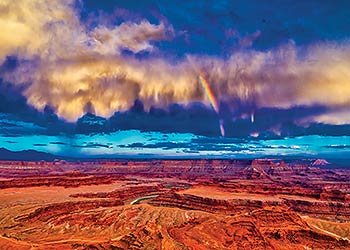Photographers, if they are serious about their intent, use their cameras as poets use their pens, composing visual delights with lyrics made of light, not words.
Do you doubt that photographers and poets have much in common? Poems evoke emotions by weaving images in our minds, using words either spoken or written. Creative photographs conjure those images in shades of light and color.
When done well, the effect is much the same. By engaging the viewer, a photograph can yield feelings of wonder and awe, a sense of peacefulness, of connection with nature, sadness, curiosity, sympathy and so much more.
Photographs can be powerful. Think of that evocative image from September 11, 2001, of a man falling from the heights of a burning office tower. For me, at least, few poems can yield the emotional impact of that photograph, “Falling Man” by Richard Drew, with all the horror it contains. When I first saw it 20 years ago tears fell from my eyes, and even today it has a powerful emotional effect when I see it.
Or think of another example: “Tank Man” by Jeff Widener, which shows a lone Chinese man blocking a line of tanks in Tiananmen Square. Just as Macaulay’s poem “Horatius at the Bridge” honors an individual act of courage, so does this Pulitzer Prize-winning photograph.
Not all photographs are such dramatic examples. In my own work as a landscape photographer, I seek to compose my pictures of the earth to invoke appreciation for its beauty. Just as the poets Emily Dickenson and Robert Frost often used words to describe everyday insights, I hope my photographs provide the sense of place and connectedness that is missing in many of us.
When I see a rainbow over a canyon, gaze in awe at the glory of the Milky Way or watch the setting Sun light up a red rock tower, I feel in tune with the Universe. When I capture those emotional responses with my camera, I’m like the poet scribbling a new insight into her journal. It’s much the same.
 |
| The setting sun lights up falling rain over the winding canyons of the Colorado River as seen from Dead Horse Point. A slice of rainbow appears before the rain evaporates in the dry air. |
And yes, I sometimes compose poems in words as well as light. Here is an example, a few stanzas from a poem I wrote about the Colorado River:
I drink the rains that gently fall
In answer to the Shaman’s call,
And suckle at each tiny stream
That longs to join my timeless dream.
My friend the Wind who rules the air
Brings me news both ill and fair.
I bless the Frost, my chilly brother:
He breaks the rock, splits it asunder.
I am the river, mighty waters
Ever tasked in earthly matters.
My work goes on, an endless quest
That leads me on from East to West.
Waters red like living blood,
Flesh of water, bones of mud,
Canyon cleaver, boulder mover,
Ever-patient landscape carver.
I hope you agree that poems can be written in either words or light. My featured photograph is a complement to my poem of words. It shows a view from Dead Horse Point, taken just before sunset, looking across the twisting canyons of the Colorado. There is rain falling and evaporating in the air, but not before allowing the Sun to make a little rainbow for us all to enjoy. I call it “Golden Rain Over the Canyons.”
_____________________________________________
David L. Brown is a landscape photographer who has led photo tours from his base in Moab since 2015, now as Printworks Photo Tours. His fine art prints can be seen at Printworks Gallery, 1105 S. Hwy. 191. He invites you to visit or call at 435-355-0121.
|